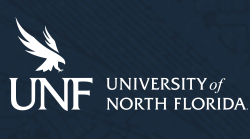Document Type
Article
Publication Date
6-2017
Abstract
Objective
The objective of the study is to examine the role of characteristics of proteins in maternal and weaning diets on risk of metabolic syndrome in male offspring.
Methods
Pregnant Wistar rats were allocated to two groups (n = 12) and were fed the AIN‐93G diets based on either intact protein‐based diet (IPD) or mixed amino acid‐based diet (AAD) from day 3 of gestation throughout gestation and lactation. Male offspring were weaned to either an IPD or AAD diet for 18 weeks.
Results
In dams, AAD group had lower body weight in post‐partum period and higher pulse rate compared with IPD group. In pups born to AAD dams, birth weight and body weight were significantly lower, and systolic blood pressure and fasting blood glucose were significantly higher compared with those born to IPD dams. Fat/weight ratio, insulin and homeostasis model assessment of insulin resistance were not influenced by either maternal or weaning diet.
Conclusions
These results indicate that the physico‐chemical structure of proteins fed to dams is important in altering risk factors of metabolic syndrome in the offspring, while weaning diets do not seem to play a role. IPD had more favourable effect than AAD. These results may also indicate that dietary recommendations during development must be updated based on physiological properties of dietary proteins that are beyond their nutritional role.
Recommended Citation
Jahan-Mihan, Alireza; Labyak, Corinne A.; and Arikawa, Andrea Y., "The effect of characteristics of proteins fed during gestation and lactation on development of metabolic syndrome in dams and male offspring of Wistar rats" (2017). Nutrition and Dietetics Faculty Research and Scholarship. 7.
https://digitalcommons.unf.edu/hnut_facpub/7
Rights Statement
http://rightsstatements.org/vocab/InC/1.0/
Creative Commons License

This work is licensed under a Creative Commons Attribution-Noncommercial-No Derivative Works 4.0 License.



Comments
Published in Obesity Science & Practice vol. 3 no.2
https://doi.org/10.1002/osp4.95